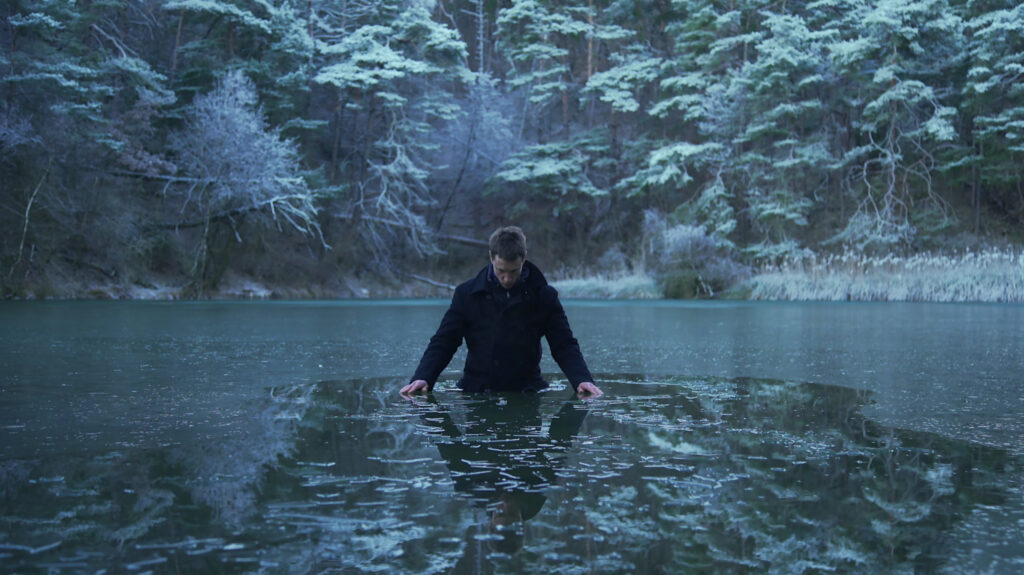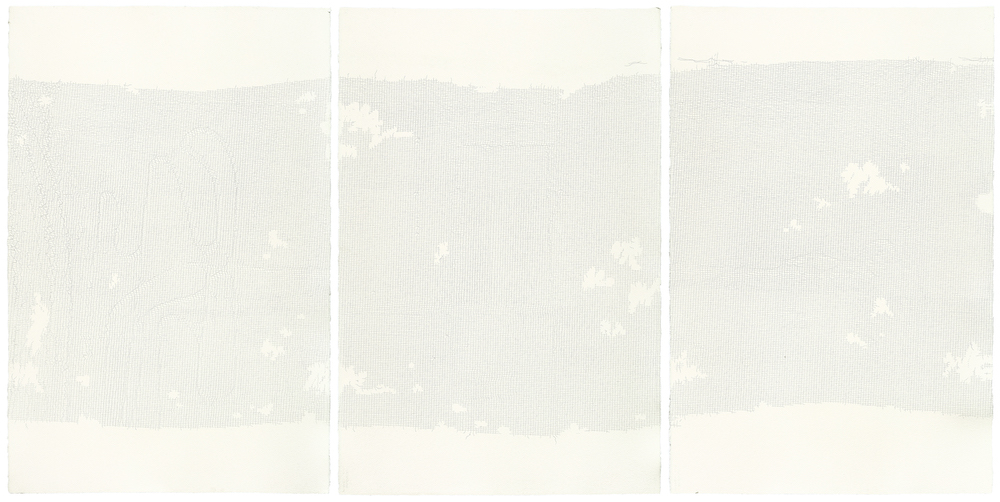This year’s stormy weather makes a perfect backdrop for an exhibition that pits the breadth of human existence against fragile landscapes, writes Miranda Johnson.
Journeys into the stormy heart
11 August 2021
- Reading time • 5 minutesVisual Art
More like this
- A walk with Tina Stefanou
- A blaze of glorious people
- Diving into the gothic world of Erin Coates
‘Beating Heart’, Jacobus Capone ·
Fremantle Arts Centre ·
It was a stormy day in Walyalup (Fremantle) when I visited Fremantle Arts Centre (FAC), a fitting backdrop for its two current exhibitions, West Australian artist Jacobus Capone’s “Beating Heart” and Ukrainian-Australian artist Stanislava Pinchuk’s “The Archaeology of Loss”. Full of rich textures of ice, stone and human emotion, both exhibitions are thoughtful and careful warnings of the lengths humans will go to, to push themselves or one another to the brink.
“Beating Heart” features three works from Capone’s recent practice, all centring on the inherent fragility and frailty of human existence. At its core is his 2018 work Echo & Abyss, a 10-channel video installation that unflinchingly traverses unfriendly and dramatic landscapes. All feature the artist’s body, slowly travelling, stopping, and interacting with the environment in which he is embedded.
Presented in the round, within a darkened gallery space, Echo & Abyss is a mesmerising experience, with each channel slowly progressing the journey from a cave in Switzerland, across and into partially frozen rivers, crags and forests. Throughout the journey we see Capone, never looking towards the camera, eyes perpetually fixed on the landscape and beyond.

It’s a vision of isolation, vulnerability and human strength, but the rich and layered footage, the slow movement of each chapter fading into the next, ensure it also feels like an elegy to these frozen landscapes that will soon no longer exist. It’s not the human for whom we should be afraid, but the ice itself – it cannot survive.
These feelings of inevitable doom tinged with a gentle, loving sadness are reflected in the banner series that lines the halls between each gallery. Made in collaboration with Capone’s mother Maria Gomes, each handmade flag bears one of three sentences – “I will die”, “you will die”, “we will die”. A confronting sight, it is a reminder of a life lived with one eye always on the ending – not with fear, but with unwavering readiness.
Presented alongside these two confronting works are Capone’s copper leaf and volcanic ash works on paper. Titled Perdition and Prayer, these works are described as archives of images, words, and objects that together form a collection of symbols, meaning distilled into forms. They’re a stunning display of delicately formed works, though I felt as though their connection to the rest of the works wasn’t made as clear as it could have been. However, for works that are both deeply personal yet also universal, grappling with mortality and the inevitability of collapse, they seemed ultimately fitting, a private way to track and record these feelings and experiences that we all must face.
In keeping with these themes, neighbouring exhibition “The Archaeology of Loss”, by Stanislava Pinchuk, is a reflective and personal consideration of trauma and human frailty. Curated by Rachel Cieśla, the exhibition features Pinchuk’s delicately pinholed works on paper. Each forms a topography of loss, cultural displacement or man-made destruction. Initially presenting as a blank piece of paper, close inspection reveals the undulations and patternation of the holes.
From Capone’s sweeping icy terrains to Pinchuk’s delicate and painstaking marks, the two exhibitions play off each other, exploring the breadth of human emotion pitted against fragile landscapes.
Pictured top is a still from Jacobus Capone’s ‘Echo & Abyss’, 2018, Synchronised 10 Channel HD Video, dimension: variable. Photo: Courtesy the artist and Moore Contemporary

Like what you're reading? Support Seesaw.






